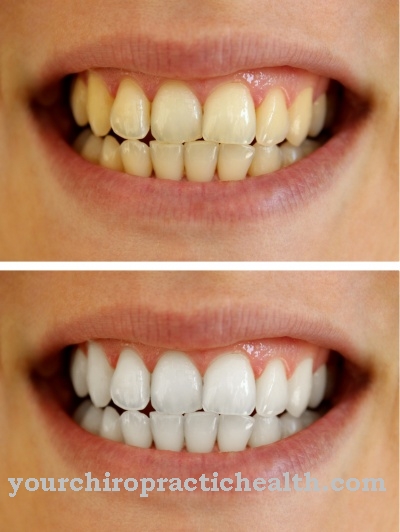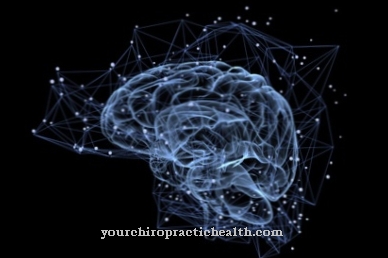The Radioiodine therapy is a nuclear medicine method that can be used to treat diseases of the thyroid gland. This procedure is particularly effective in the case of an overactive thyroid, goiter formation or thyroid carcinoma.
What is radioiodine therapy?

A Radioiodine therapy is used for problems with the thyroid gland. This butterfly-shaped organ, which is located in the neck area in front of the windpipe, is responsible for storing iodine and producing thyroid hormones.
The thyroid hormones are of great importance for the energy metabolism of the body and diseases of this organ are usually associated with a variety of complaints throughout the body. In radioiodine therapy, the patient is given the radioactive isotope of the element iodine. This enters the blood via the digestive tract and accumulates in the thyroid gland.
The part of the radioiodine that is not stored in the thyroid is excreted via the kidneys within a few days and does not pose a health problem for the body. Radioiodine therapies are used for various thyroid diseases. These include, for example, benign thyroid growths, which release hormones independently of the actual thyroid cells, or the autoimmune disease Graves' disease, which leads to goiter formation.
Function, effect & goals
That is particularly effective Radioiodine therapy if you have an overactive thyroid. An overactive thyroid is triggered by an autonomy of some of the thyroid cells. These parts of the tissue produce excess hormones because they are not under general control.
The aim of radioiodine therapy is to kill these autonomously working cells in the thyroid so that they can no longer produce an excess of hormones. The radioiodine stored in the thyroid breaks down and emits beta radiation, which destroys the surrounding tissue. This mode of action is used in radioiodine therapy to kill those cells in the thyroid that produce the excess hormone.
The areas of the thyroid tissue that release too many hormones and cause the patient's symptoms of overfunction are very active and have a fast metabolism, the radioiodine is mainly deposited in such cells and destroys them. The healthy thyroid tissue is not damaged. A therapy with radioiodine can also be promising in diseases that do not result in an overactive thyroid. These include thyroid carcinomas or thyroid enlargement.
The principle of action of the therapy is the same as for an overactive thyroid. In the case of an enlarged thyroid gland, radioiodine treatment can lead to a considerable reduction in the size of the goiter and the associated symptoms, even if the thyroid is not overactive. In many patients, the goiter can even be completely eliminated. Thyroid cancer can be treated very effectively with the radioiodine method. Most degenerate cells accumulate iodine and can be killed by beta radiation when it decays.
In the case of cancer, the patient is given a higher dose of radioiodine than in the case of an overactive thyroid. This therapy is often used after a partial surgical removal of the thyroid carcinoma in order to be able to remove the remaining degenerated tissue. In many cases, this can be used to cure thyroid cancer.
Risks, side effects & dangers
Treatment of the thyroid with radioiodine is not a dangerous therapy and only very rarely has undesirable side effects. Nevertheless, due to the radioactivity of the iodine used, certain precautionary measures are necessary. Patients are advised to drink enough in the first two days after taking the radioiodine because the iodine that is not enriched in the thyroid is excreted in the urine and this should happen as quickly as possible so as not to unnecessarily endanger the urinary bladder.
In addition, it is recommended to increase the flow of saliva, for example by sucking acidic drops, because a small proportion of the radioactive iodine is also excreted in the saliva. In order not to endanger other people with increased radiation exposure, patients must during the Radioiodine therapy be admitted to a specially designated hospital ward. The radiation exposure of the patient's internal organs is low. The radioiodine breaks down quickly and mainly emits beta radiation.
This radiation has a very short range, which is in the millimeter range, and therefore hardly affects other organs. Studies show that there is no higher cancer mortality rate in people treated with radioiodine than in the rest of the population. In rare cases, side effects can occur directly during or after therapy. However, these are usually not dangerous and can be treated well.
The most common acute side effect is inflammation of the thyroid gland, which can occur a few days after starting therapy. However, this can be treated quickly and effectively with anti-inflammatory and pain relieving drugs and is usually harmless.












.jpg)



.jpg)










.jpg)
